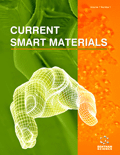Abstract
Background: One of the most widely researched metal oxide semiconductors for versatile applications is ZnO. Especially the wide bandgap of 3.37 eV and large excitation energy of 60 meV make it an efficient semiconductor for various optical, electrical and thermal applications. The promising applications of ZnO include UV absorbers, photo catalysis, solar cells, field effect transistors, etc.
Methods: Hierarchical Zinc Oxide (ZnO) and Erbium doped Zinc Oxide (Er:ZnO) nanostructures were successfully synthesized by using facile citrate and polyethylene glycol (PEG) assisted hydrothermal process. The as-prepared ZnO and Er:ZnO samples were characterized by X-ray diffraction analysis (XRD), field emission scanning electron microscopy (FE-SEM), Photoluminescence (PL) spectroscopy and UV–visible spectros-copy. The effect of doping on the formation of distinctive morphology was systematically established.
Results: Gas sensing activities of the as-prepared samples were monitored by testing reducing gases like Acetone, Ethanol, Ammonia, TEA, EDA, Formaldehyde and DMSO. The sensitivity towards the test gases was observed to be increased after Er doping. Both ZnO and Er:ZnO displayed the maximum response towards Acetone followed by TEA.
Conclusion: Hierarchical ZnO and 3% Er doped ZnO were prepared by facile PEG and citrate assisted hydrothermal method. The structure, morphology and optical properties were studied using various characterization methods. All the properties were observed to be enhanced after doping with erbium. The gas sensing properties at an optimum temperature of 300°C were investigated. The sensitivity towards the test gases increased after doping. Both ZnO and Er:ZnO displayed the maximum response towards Acetone followed by TEA.
Keywords: Hydrothermal process, gas sensing, erbium, zinc oxide, semiconductors, PEG.
 15
15





